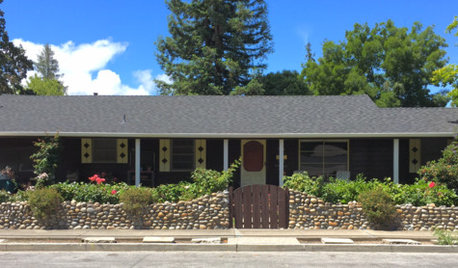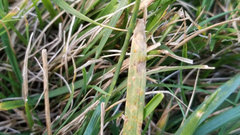Lawn Care for Marathon I & II in OC, CA
Brodywc
3 years ago
Featured Answer
Sort by:Oldest
Comments (16)
Brodywc
3 years agolast modified: 3 years agoRelated Discussions
Fertilizer Program for Containerized Plants II
Comments (150)I tend to be very sceptical of 'miracle' products like Eleanor's fertilizer and Superthrive that use broad & vague rhetoric to tell you they do everything but cook a perfect 2-minute egg. If it worked like they want to believe it works, they would assuredly lay out the mechanism by which it works to satisfy the sceptics & even the cynics, thereby separating them from the ability to taint the manufacturers sweeping claims. It's sort of like the gritty mix or FP 9-3-6. I can recommend these products for container culture & make help you believe they will work because I can explain why and how they work in a way that leaves you feeling satisfied that your odds of seeing them as beneficial are very good. The many others adding their voices don't hurt, either. OTOH, we can see that it's difficult to sell heavy, peat-based soils when we look critically at them from the plant's perspective - or with the aim of optimizing growth and vitality. There will always be as few people who LOVE these heavy soils for whatever reason, but when it comes to convincing the masses that they truly ARE the best from the plant's perspective, the conversation usually finds them coming up short because of inherent issues that are very difficult to remedy. The same can be said of certain types of fertilizers. As a result, FloraNectar ensures optimal metabolic rates during the flowering and fruiting phase when nitrogen levels have been reduced. How can they make this claim? How can they 'ensure' anything optimal? FloraNectar fulfills the additional energy requirements of your plants throughout all phases of growth and during stressful times of transition. How? Plants' only source of energy comes from the sun & is stored in the sugars, starches, oils, and other bio-compounds they manufacture themselves .... When it comes to horticultural products, if it SEEMS too good to be true, there's a very strong likelihood it isn't. It doesn't bother me that some one else might be convinced of the product's value, but personally, I need a lot more convincing & something with a little more substance to sink my teeth into before I take the hook. ;-) AL...See MoreBermuda Lawn Changeover and Winter Lawn
Comments (41)Texas-Weed wrote: > You can lay the sod now, just not the optimum time to do it... But you have raised a huge RED FLAG. You are in DFW and want to replace Bermuda lawn with Saint Augustine? Why? You just as well go to the Middle East and promote the USA and Christ as that will be easier, take less time, and more rewarding. ======== Texas-Weed wrote the above in a different thread but I thought I'd reply in this one. I'm an atheist, although I still enjoy attending Christmas services. I guess I just read too many science books in high school. I should have said ZZ-chromosome male frogs, not XY male frogs in my post above. Regading not seeding improved varieties of common bermuda into a vegetatively produced hybrid bermuda lawn, I imagine the bermuda experts may say the hybrid bermuda is a much higher quality lawn; it looks a lot better than a seeded bermua lawn, or so I'll guess that's what they'll say. I'm not an expert on bermuda though. I know zoysia much better since that's what I grow. Zoysia looks sooo good and it's much less work than bermuda. For example, you don't need to cut zoysia as low or as often as bermuda to keep zoysia looking good. You can even cut zoysia as high as 2 inches, just once a week, or even less frequently in times of drought. During this last drought, I only needed to cut my zoysia after 5 weeks! Zoysia doesn't grow vertically as fast as bermuda. Bermuda grows tall like a weed :-)...See Moremarathon II seed growing very narrow blades
Comments (2)Thanks for commenting Dchall - You're not far off... especially from where i was when i laid the sod 5 years ago and installed the sprinklers. Nowadays in winter and spring i water once a week for 20 mins per zone. Last year (prior to finding this forum) i was watering in the hotter/dryer season 4 days a week for 15. As far as feeding and etc. get ready to throw up, i've been using scotts weed and feed, the yellow bag and the all purpose scotts grass insecticide in the orange bag. Go easy on me, i really had no idea that i didn't know how to take care of a lawn until i started reading this forum....See MoreCare for Marathon Fescue During Drought
Comments (3)Aw, geez! Well, I need more information. Where do you live? Are you in downtown SD? Are you in La Jolla (where Marathon should work fine)? Or are you in El Cajon (where Marathon should not be used in a drought)? San Diego isn't all that big but the people who claim to be living there cover a wide area of climate and soils. Fescue is generally thought to be a 'cool season' grass. That means it's grown in the upper midwest and in the east but north of Georgia. It is more successful the farther north you get. Coastal California should be an okay place for fescue. But it is totally a luxury grass for interior Cali and to the east. I've seen it growing in Palm Desert and Indio, but what a mistake! (I've grew up in the Inland Empire but also lived in Pomona, Hawthorne, Downey, Huntington Beach, Palm Desert, Indio, Temecula, Hemet, Winchester, and Stanton. We had friends who lived in several places in the SD area, so I took some mental notes). You're not going to like my watering advice, but it will work almost no matter where you live. First you need more info about your own system. How much water does your system put out in 10 minutes? You can test that by putting cat food or tuna cans in the yard and measuring the amount you collect. Ultimately what you want to know is how long your system takes to fill those cans. My oscillator sprinkler takes 8 full hours to fill the cans. My neighbor's high flow system fills them in 20 minutes. You can't just guess at this. Okay so the watering mantra is 'deep and infrequent.' Deep means 1 inch (1 can) of water all at one time. It's the 'infrequent' part you're not going to like. Infrequent means once per week when the temps are in the 90s (La Mesa and to the east). When the temps are in the 80s (most of the SD metropolitan area), water once every 2 weeks. When temps are in the 70s (La Jolla and within the beach influence), water once every 3 weeks. I realize you have millions of Californians telling you that you need to water every day, but that is incorrect. And when I say incorrect, I'm talking about after reading thousands of messages in lawn care forums over the past 13 years. A friend of mine in Phoenix waters his St Augustine lawn once per week with temps of 115. Surely you can water less than 2x per week in SD. But before you jump into deep and infrequent watering, let's get some answers first. So, where are you? Also what are your specific watering restrictions? In San Antonio during normal times we're allowed to water 8 hours per day, but only once per week. During harder drought it's 7 hours per day and only once every 2 weeks. Every community is different, so what are your restrictions?...See MoreBrodywc
3 years agoBrodywc
3 years agolast modified: 3 years agoBrodywc
3 years agodchall_san_antonio
3 years agoUser
3 years agoBrodywc
3 years agoUser
3 years agoBrodywc
3 years agolast modified: 3 years ago
Related Stories

LANDSCAPE DESIGNCalifornia Says Goodbye to the Sprawling Ornamental Lawn
New state rules will effectively limit turfgrass to 25 percent of the landscape in most new and renovated yards
Full Story
HOUSEKEEPINGHow to Clean Your Range and Oven
Experts serve up advice on caring for these kitchen appliances, which work extra hard during the holidays
Full Story
KITCHEN DESIGNDesign an Easy-Clean Kitchen
"You cook and I'll clean" might no longer be a fair trade with these ideas for low-maintenance kitchen countertops, cabinets and floors
Full Story
MOST POPULAR4 Obstacles to Decluttering — and How to Beat Them
Letting go can be hard, but it puts you more in control of your home's stuff and style. See if any of these notions are holding you back
Full Story
MOST POPULARHow to Hang the American Flag at Home
We’ll show you how to display the American flag on your house for Memorial Day, the Fourth of July or all year round
Full Story
KITCHEN DESIGN8 Kitchen Organizing Ideas for Messy Cooks
Not the clean-as-you-go type? Not to worry. These strategies will help keep your kitchen looking tidy no matter what your cooking style is
Full Story
GARDENING FOR BUTTERFLIESBe a Butterfly Savior — Garden for the Monarchs
Keep hope, beauty and kindness alive in the landscape by providing a refuge for these threatened enchanters
Full Story
COMMUNITYGood Neighbors Make Her Street Feel More Like Home
A local historian, a burglary stopper and the world’s greatest grandparents have enriched this writer’s life
Full Story
LANDSCAPE DESIGNLandscaping Tricks to Manage Stormwater Runoff
Help rainwater absorb slowly back into the earth with paving grids, gravel beds and other porous systems
Full Story
MOST POPULAR9 Real Ways You Can Help After a House Fire
Suggestions from someone who lost her home to fire — and experienced the staggering generosity of community
Full Story

















User